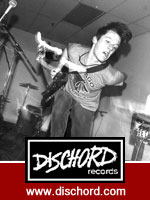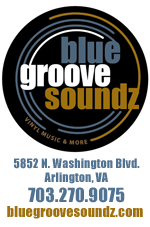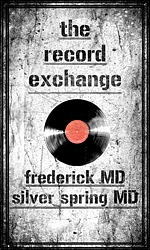PHOTOS: RICHIE DOWNS | Once a decade or eon or so, an LP comes along that is simply too tortured and nakedly honest for human ears. 1978’s twisted and raw Third/Sister Lovers is such an LP. The final offspring of the seventies’ incarnation of Memphis, Tennessee power pop band Big Star—which never dented the charts during its lifetime but has achieved cult superstardom in the years since—Third is anything but a catchy power pop record. I mean it could be, were it not lacking in the catchy, the power, and the pop departments. That said it is a bona fide 12-inch record, which ought to count for something.
What Third offers the listener instead of Big Star’s previous infectious and bittersweet tunes about teenage kicks, love, and heartbreak (you know, like the great Raspberries, only more emotionally complex and sonically all over the place) is the sound of former Box Top Alex Chilton teetering on the edge of the psychic abyss and about to completely lose his shit, to the loving accompaniment of some great string arrangements by Carl Marsh. (They should have entitled the LP Breakdown to Strings.)
As such, Third is every bit as nakedly powerful a work of art as Jack Kerouac’s Big Sur, F. Scott Fitzgerald’s “The Crack Up,” or heroin- and booze-ravaged Charlie Parker’s tortured 1946 Dial Records take on “Lover Man,” which he couldn’t even stand on his own to record and which was followed by a long “vacation” in California’s Camarillo State Mental Hospital.
Third’s honesty and vulnerability have moved innumerable music fans, even if I’ve never been one of them. Sure, I’m touched by some of the songs on the LP, and admire its complete disregard of commercial considerations—they certainly couldn’t have expected this one to go platinum—but I’ve always found it both cold and lacking in irresistible tunes, and really only like 5 or so of its 14 (or more, depending on which release you buy) cuts.
But when it comes to Third I know I’m in the minority amongst Big Star fans, including R.E.M.’s Peter Buck, who described it as “a Rosetta Stone for a whole generation.” Big Star fanatics’ chances of seeing the band play the LP live are precisely zilch, due to the death of front men Chris Bell in 1978 and Chilton in 2010. But they’re currently being offered the next best thing: a full performance of the legendary LP by an ad hoc supergroup consisting of sole surviving Big Star member Jody Stephens, R.E.M’s Mike Mills, Let’s Active’s Mitch Easter, and The dB’s Chris Stamey, along with keyboardist Charles Cleaver and vocalists Django Haskins of pop-noir group The Old Ceremony, singer-songwriter and sometimes dB’s touring member Brett Harris, and Durham-based singer-guitarist Skylar Gudasz, to say nothing of horn and string sections, the latter of which is being conducted by Shawn Galvin. They also gather local rockers as they travel from town to town, such as the Jawhawk’s Gary Louris, Wilco’s Pat Sansone, Title Tracks’ John Davis, and Rayland Baxter.
Whenever you think there’s any justice in this world, look up at the stars. And to Big Star in particular. A power pop quartet formed in 1971 when Chilton—at loose ends after departing The Box Tops and turning down an invitation to sing for Blood, Sweat & Tears—joined forces with co-genius Chris Bell and the latter’s band Icewater, whose other members included bassist Andy Hummel and drummer Jody Stephens. The newly formed Big Star released #1 Record in 1972, which despite the bravado of its title sold like rabies, despite the inclusion of such brilliant Chilton-Bell compositions as “Thirteen” and “In the Street.” By the time Big Star got around to recording 1974 follow-up Radio City the group was a shambles, with band members punching one another in the face, that is when they weren’t busy destroying each others’ instruments and doing injury to each others’ automobiles. Bell, who was subsisting on shitloads of drugs at the time, quit the band twice, the second time for good. So the remaining trio finished the recording, which like its predecessor received mucho critical plaudits while selling like asbestos hotcakes, despite such great and timeless tunes as “September Gurls” and “Back of a Car.”
Come the 1975 sessions for Big Star’s Third—which was not released until 1978—only Chilton and Stephens remained, and they made do with the help of a stellar cast of studio musicians, including producer Jim Dickinson (who played a variety of instruments) and Booker T. and the M.G.’s Steve Cropper on guitar. But even Chilton and Stephens lost interest in the LP, and there has long been a debate over whether Third/Sister Lovers is a Big Star LP at all, with Chilton himself being quoted as saying, “We never saw it as a Big Star record.” But what does he know? He only created the damn thing. You’ll never convince anyone, including the family dog, that the haunting Third is anything but a Big Star record, even if it sticks out amongst the band’s earlier LPs like Martin Bormann at a bat mitzvah. In place of such brilliantly bittersweet tunes about adolescence as “Thirteen” and “Back of a Car,” Third features an array of largely bleak and gnomic songs of dark introspection, only a few of which can be described as “infectious,” that favorite of power pop adjectives.
So why tour playing LP #3, when its predecessors provide all of Big Star’s real power pop thrills and chills? Simple. Third, like Arthur Rimbaud’s A Season in Hell, offers one a harrowing and hypnotic glimpse of a tormented soul’s long day’s journey into night, and as such possesses an emotional punch its brighter siblings, great as they are, simply don’t possess. It’s a dark night of the soul on wax, and one almost feels guilty listening to it. You get the sense—as I do every time I listen to Richard Manuel sing “I Shall Be Released”—that one simply shouldn’t be privy to such anguish, and how Third ever saw the light of day in the first place is beyond me.
Given such material, I showed up at the 9:30 Club on the evening of August 23rd prepared to be thoroughly bummed. But such was not the case, largely because Stamey, Easter, Mills, and Company chose to play #1 Record in its entirety before moving on to the chilling Third. And the show was excellent, although I wouldn’t call it great. As for the following review, it is short on details, due mainly to my inability to tell who was who amongst the constantly revolving and Cecil B. DeMille-sized cast of characters crowding the stage, which at times resembled the cast assembled during the final number of The Last Waltz, I was reduced to writing things like “Guy in horizontally striped shirt plays solo.” That’ll teach me to spend the time I might have spent listening to bands like Let’s Active and the dBs shit-faced drunk in the basement of my family home in Littlestown, PA, firing off guns while listening to the first Meat Puppets LP.
Anyway, the band succeeded in capturing the spirit of both LPs, even if both Chilton’s and Bell’s vocals are inimitable. Stamey sang lead on “Feel,” the opening cut off #1 Record, while Easter provided some great guitar work, and it was wonderful, although not as wonderful as super-catchy follow-ups “The Ballad of El Goodo” (worst name for a power pop tune ever) and the immortal “In the Street”—which captures the boredom and the unscratchable itch of adolescence as well as any song ever written, and includes that great line, “Wish we had a joint so bad”— which featured Django Haskins and (I think!) Brett Harris swapping vocals.
Skylar Gudasz sang “Thirteen,” supported by a couple of acoustic guitars and it was lovely, while the hard-rocking “Don’t Lie to Me” featured Haskins on vocals and the electric guitar pyrotechnics of Easter, who was just one of four guitarists on stage at that point. “The India Song” has never thrilled me, and nothing, not even the guy crouched in a corner of the stage playing some Indian stringed instrument that was definitely not a sitar, could save it for me. I was, however, smitten by the very fetching “When My Baby’s Beside Me,” which featured two vocalists and some cool psychedelic guitar, while “My Life Is Right” boasted some very delicate vocals, delicious and soaring harmonies, and lots of crunchy-as-dry cereal guitars.
“Give Me Another Chance” opened quietly, and featured some cool acoustic guitar work, great backing vocals, and the inspirational lyric, “It’s so hard to stay alive each day.” Then the string section kicked in, and was positively ethereal, especially in combination with the vocals. As for the country-tinged “Try Again” it featured Gudasz on vocals and a quartet of violas, and was one quiet and restrained tune with a lovely melody. “I’ve been trying to be understood,” she sang, but “every time it gets harder,” and I know where she’s coming from. Meanwhile, “Watch the Sunrise” was one beauty of a tune, what with its quickly strummed guitars and almost folky feel, while LP closer “ST 100/6” was lovely as well, albeit over in the blink of an eye. One thing you have to say for Chilton and Bell; they sure didn’t believe in stretching ‘em out. They’re the kings of the wham bam thank you ma’am power pop song, no doubt about it, with only two songs that surpass the 4-minute mark in their entire canon.
The second set, which was what the paying audience came to see, was also great, even if, as I’ve said before, Third/Sister Lovers has never floated my boat. The band opened with “Nature Boy,” a very quiet (and face it, dull and largely tuneless) song that opened with strings, which were followed by Haskins on vocals accompanied only by Charles Cleaver on electric piano. Fortunately the band followed it with LP opener “Kizza Me,” a full-bodied rocker that relied less on the piano than the Big Star version and more on some big guitar bash and bang. And the band followed it up with the likes of the string-laden and delicate chamber pop tune “For You” and the very pretty and atmospheric “Nightime,” which featured some cool Easter guitar, to say nothing of those existentially dark lines, “Get me out of here/Get me out of here/I hate it here/Get me out of here.” That makes two of us, Alex.
The surprise of the night was Mike Mills’ vocals on the great “Jesus Christ.” He even did a little dance, and was backed by some excellent backing vocals and a short saxophone solo. “Take Care” featured a nice string intro as well as some accordion, but it’s another one of those frilly and chilly chamber pop tunes that are long on atmospherics but short on melody as well as short, period. In point of fact, the damn thing was over before I could even finish typing its title on my cell phone. Next up was the lugubrious “Big Black Car,” which featured some soft-loud dynamics not to be heard on the original plus the lines, “Nothing can hurt me/Nothing can touch me,” which sound like bravado but for all I know were completely true. It also boasted a low-key jam at the end, as well as a guy playing flugelhorn, which is one instrument I am simply incapable of taking seriously, as it looks too much like one of Dr. Seuss’ creations to me. “Till the End of the Day” rocked as well, although it was also over in the blink of an eye, as was “Blue Moon,” whose chief attribute so far as I was concerned was its brevity.
And this review could go on forever so let me just touch on the remaining highlights, which included Gudasz’s vocals on the Velvets’ classic “Femme Fatale,” Django Haskins’ masterful vocals on the album’s most devastating tune, “Holocaust,” and the slow-building but powerful “Kangaroo,” which has subsequently influenced some 12,000,000 indie rock musicians to write songs just like it. “You Can’t Have Me” was also great, a kick-ass rocker that featured one cool sax as well as some Elvin Jones-quality drumming by Jody Stephens. Also worthy of mention is the cast of thousands—at least six vocalists were crowded around the microphone—who appeared on stage to sing the bona fide catchy set closer, “Thank You Friends.”
For an encore the band trotted out wonderful renditions of “Back of a Car” and “September Gurls” off Radio City, then returned a second time to perform (surprise, surprise) “I Am the Cosmos” off Chris Bell’s sole solo album of the same name.
What can I say in conclusion? I’m glad I went, if only to see Mitch Easter (I think) casually dribbling a basketball behind the vocalists on a song the title of which I can’t remember, but my personal favorite moments (with the exceptions of “Jesus Christ,” “Kangaroo,” “Thank You Friends,” You Can’t Have Me,” and “Femme Fatale”) came primarily from the band’s cover of #1 Record. What can I say, cut me and I bleed raspberries, and Third/Sister Lovers, despite its moments of sheer brilliance, is (as I’ve said again and again) anything but a power pop record. What it is exactly is hard to define, but we’re all lucky to have it around, because it’s been making people suicidally happy for 36 years now, and I venture to say that it will still be making people suicidally happy come 2050.
Chilton went on to put out some albums that I not only find distinctly superior to Third, but do sound deranged. And that’s the Chilton I listen to when I’m not listening to Big Star’s first two LPs. I have heard many negative stories about Chilton the man, and the one time I saw him he seemed more interested in insulting the audience than playing music, but who cares? His likes appear seldom, but when they do they should be cherished, coddled, and celebrated, even if such treatment is afforded to them only decades afterwards.
Some people are so ahead of their time their very reflection doesn’t appear in a mirror until long after they’ve passed it, and such was the case with Alex Chilton, who once bleakly described his career as “a bad dream I never woke from,” but who also said, “If you’re writing anything decent, it’s in you, it’s your spirit coming out. If it’s not an expression of how a person genuinely feels, then it’s not a good song done with any conviction.” Those are the words of a true artist, and if Chilton was anything, he was that. Just listen to “Jesus Christ” if you don’t believe me.
Additional Big Star’s Third Live Performances:
Aug 31 – Seattle, WA (Bumbershoot Fest)
Sept 27 – Los Angeles, CA (Wild Honey Foundation Benefit)

































































